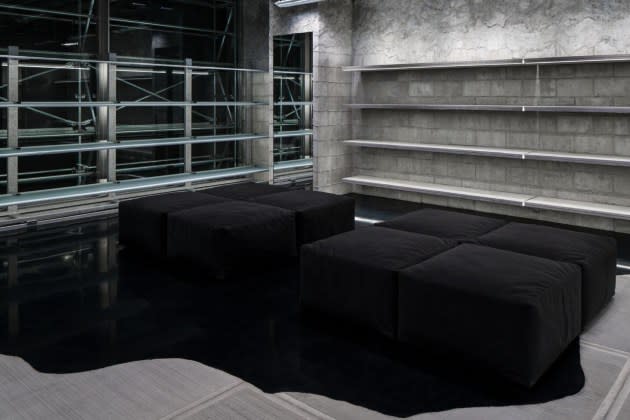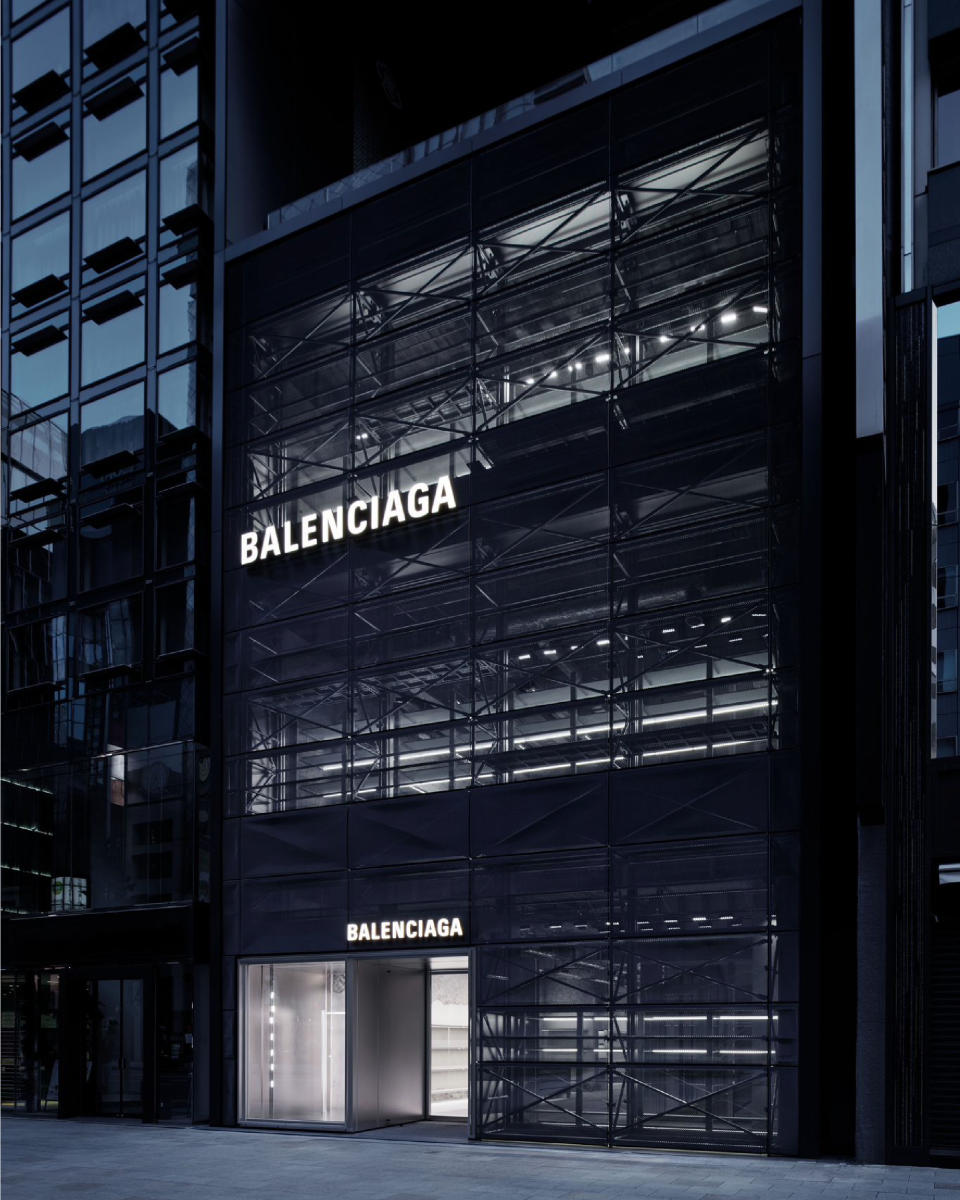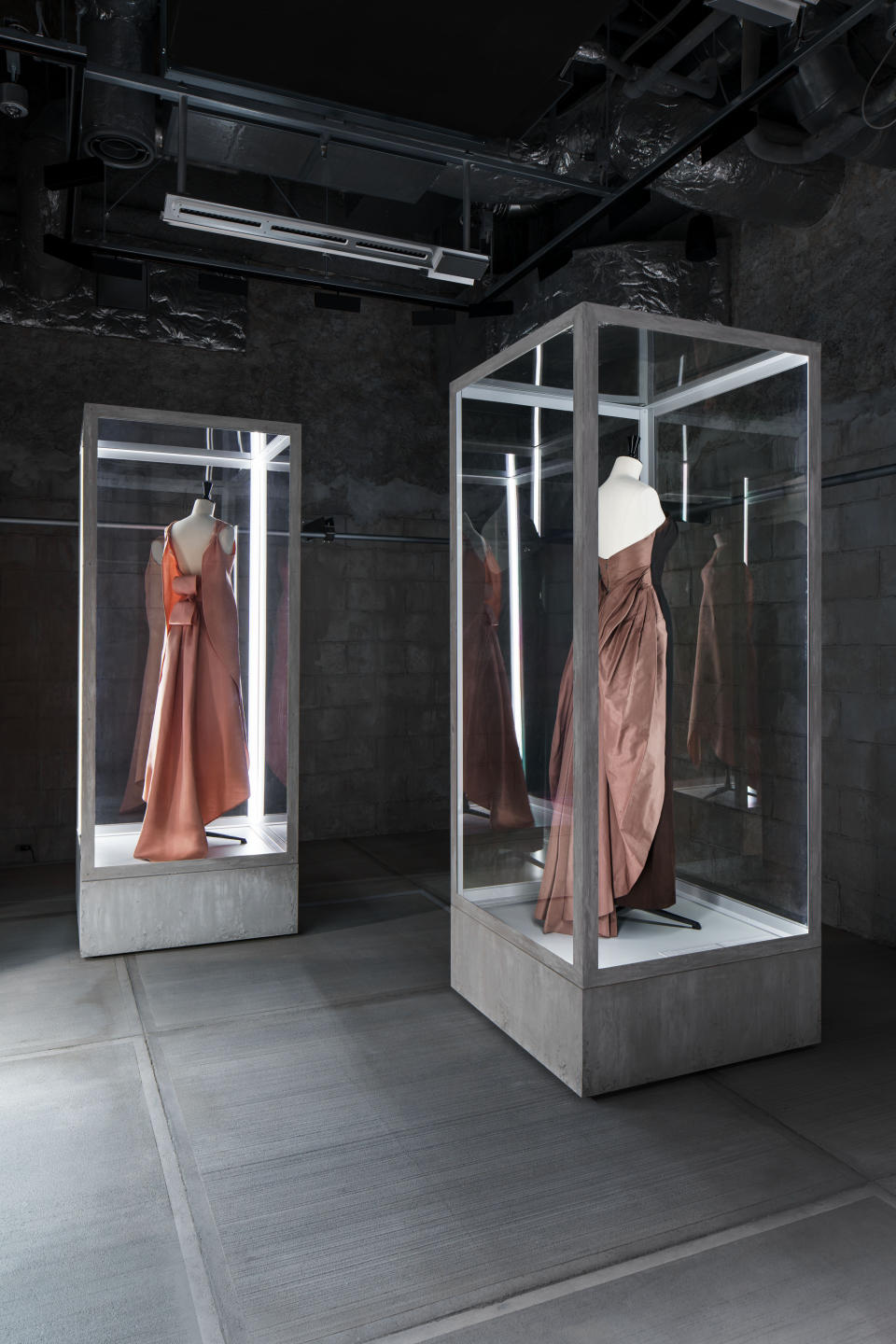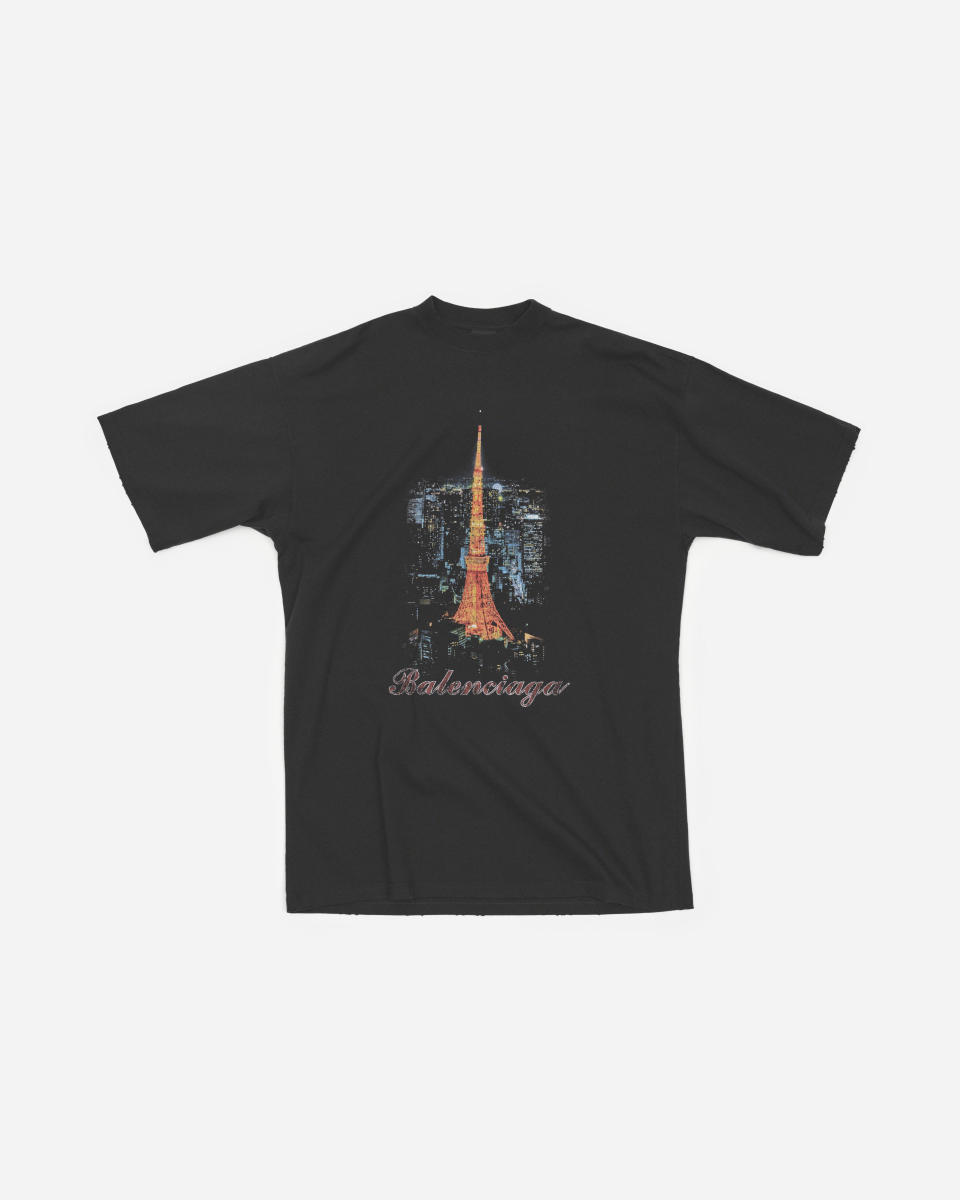Balenciaga’s New Tokyo Flagship Has Vintage Couture, Ceramics and Mochi Treats

Balenciaga is blending history, modernity — and a dash of gastronomy — at its new flagship boutique in the Toraya Ginza building in Tokyo.
The 6,700-square-foot unit, slated to open to the public on Saturday, is done up in the brand’s severe, industrial-tinged design concept, dubbed Raw Architecture and is heavy on concrete and brushed steel. Balenciaga likens the stacked nature of the glass-fronted, three-level boutique — its second Ginza location — to a parking garage, in tune with its blunt, and sometimes hardcore, take on luxury.
More from WWD

As a softer counterpoint, the brand is staging a temporary exhibition of 13 rare couture dresses by founder Cristóbal Balenciaga. Titled “Dresses Beyond Time” and billed as the first such display outside of Paris, the exhibition showcases several gowns on Stockmans inside glass cases, while more fragile garments are displayed flat and buttressed with tissue paper.
Among the notable women who owned those couture dresses are Anne Moen Bullitt, an American socialite, philanthropist and horse breeder; the Duchess of Montesquiou-Fezensac, and Marie-José Rico, the daughter of a noted singer with the Paris Opera.
Reflecting this blend of past and present, the brand plans to offer during opening festivities wagashi, a traditional Japanese sweet made by Toraya, founded in the early 16th century in Kyoto, that will come stamped with the current Balenciaga logo.

In another nod to Japanese customs, the flagship will sell limited quantities of ceramic tea bowls and vases. These handcrafted objects have been realized by Ginza Kuroda Touen, a Japanese art gallery founded in 1935 and specializing in modern and contemporary ceramics and antiques.
The store houses all of the brand’s latest fashions and accessories for women and men, along with Balenciaga Ginza exclusives, including sneakers, Le City bags and T-shirts emblazoned with the iconic Tokyo Tower, whose lattice structure and shape resemble the Eiffel Tower in Paris.

Balenciaga operates 37 stores in Japan, which has been a bright spot for most European luxury brands, gains there outpacing other regions amid a broader normalization of demand in other markets.
Luca Solca, sector head of global luxury goods at Bernstein, cited two factors fanning Japan’s explosive growth of late.
“Japan, like most other countries emerging from COVID-19, has lived a significant YOLO [you only live once] moment. People have been reminded they will not live forever, and have therefore increased their willingness to spend,” he said. “The second reason is a very weak Japanese yen, which has attracted a lot of consumers from overseas, especially from China.”
According to Bernstein estimates, Japan accounts for between 7 and 8 percent of the global luxury sector.
However, “the current success may not be long-lasting,” Solca cautioned: Many foreign brands are jacking up prices in yen in an effort to equalize prices with the rest of Asia, which may put a dent in local demand. “Japanese consumers have no benefit from a weaker yen, as they earn their salaries in JPY, and are just seeing higher prices,” he said.
Best of WWD


